Special Report
These 25 Cities Have Grown the Most Since 2000
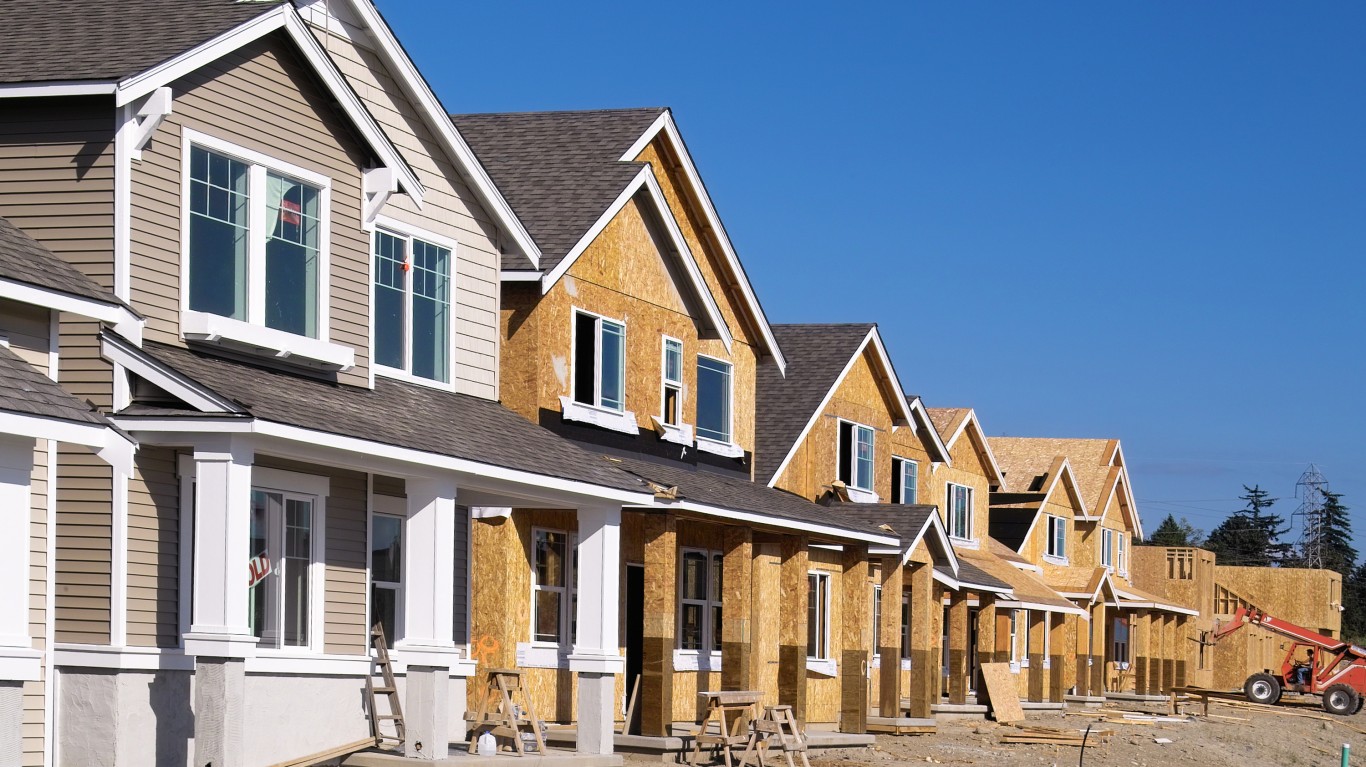
Published:
Last Updated:

The U.S. population has grown significantly since 2000, from 281.4 million to just over 321 million, a 39.6 million increase, according to the U.S. Census Bureau’s American Community Survey.
To determine the fastest growing American cities, 24/7 Tempo ranked U.S. cities by their percentage population change from 2000 to 2018 using data from the U.S. Census Bureau’s American Community Survey. Cities with fewer than 50,000 residents in 2000 were not considered.
The population of each of the 25 cities on the list grew by more than 60% from 2000 to 2018. In six cities, the population more than doubled in that time frame, and in one it more than tripled. Many of these cities are clustered around large metropolitan areas, and in a few cases, multiple cities on this list are located near the same population center, like Los Angeles or Dallas.
These rapidly-growing cities are not unique in their state or larger area. They often represent a larger trend of people moving to their respective states or nearby metro areas because of better job opportunities or higher standards of living. The 25 fastest growing cities are spread across 13 different states. Each of the five fastest growing states has at least one city on this list. These are the fastest growing (and shrinking) states.
Cities become attractive destinations for people to move to for a number of reasons. Some have booming job markets that attract new workers from other parts of the country or even overseas. Others have affordable housing markets that attract residents like younger people who are starting out in entry-level jobs. These are 40 places where young people are moving.
Click here to see the 25 cities that have grown the most since 2000
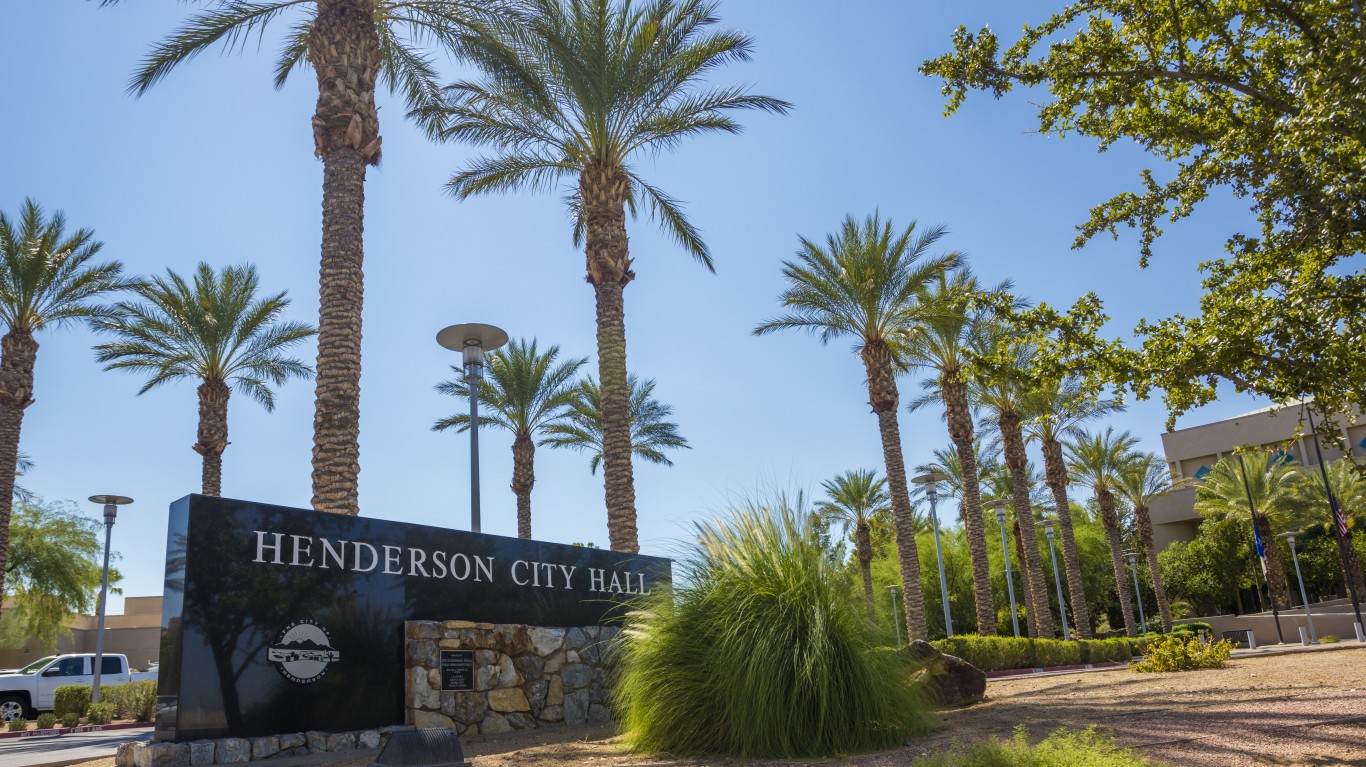
25. Henderson, Nevada
> Population growth 2000-2018: 62.4%
> Population in 2000 (Census): 175,381
> Population in 2010 (Census): 257,729
> Population in 2018 (5-yr ACS): 284,817
Henderson, Nevada, is one of the fastest-growing cities in the country, with its population growing by 62.4% between 2000 and 2018. In an interview this summer with the Las Vegas Sun, Henderson Mayor Debra March attributed the city’s growth spurt to strong quality of life and low taxes.
[in-text-ad]
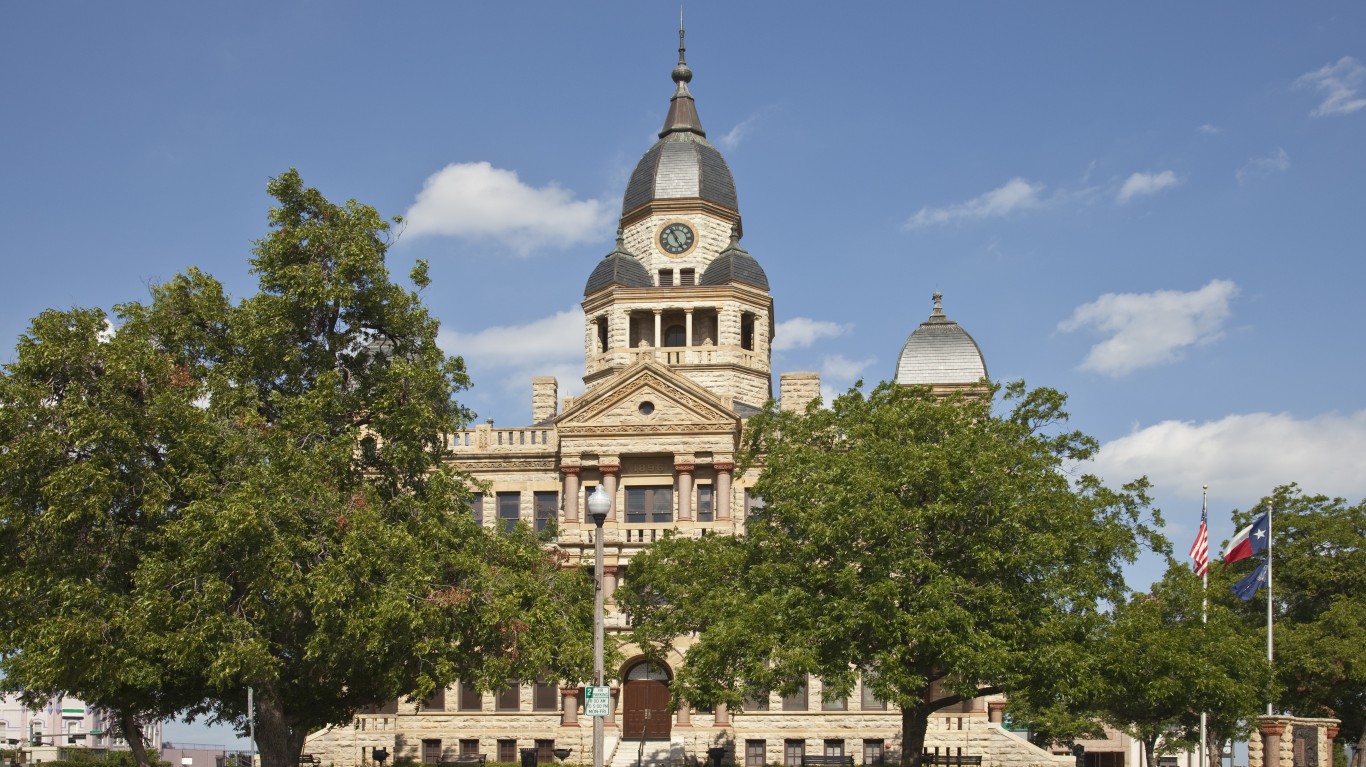
24. Denton, Texas
> Population growth 2000-2018: 62.8%
> Population in 2000 (Census): 80,537
> Population in 2010 (Census): 113,383
> Population in 2018 (5-yr ACS): 131,097
Home to University of North Texas, Denton is one of the fastest-growing cities in the country. Its population has grown by more than 50,000 people between 2000 and 2018 — an increase of nearly 63%. To accommodate this growth, local governments have undertaken ambitious highway projects to combat traffic congestion along the roads connecting Denton County to the rest of the Dallas-Fort Worth metroplex.
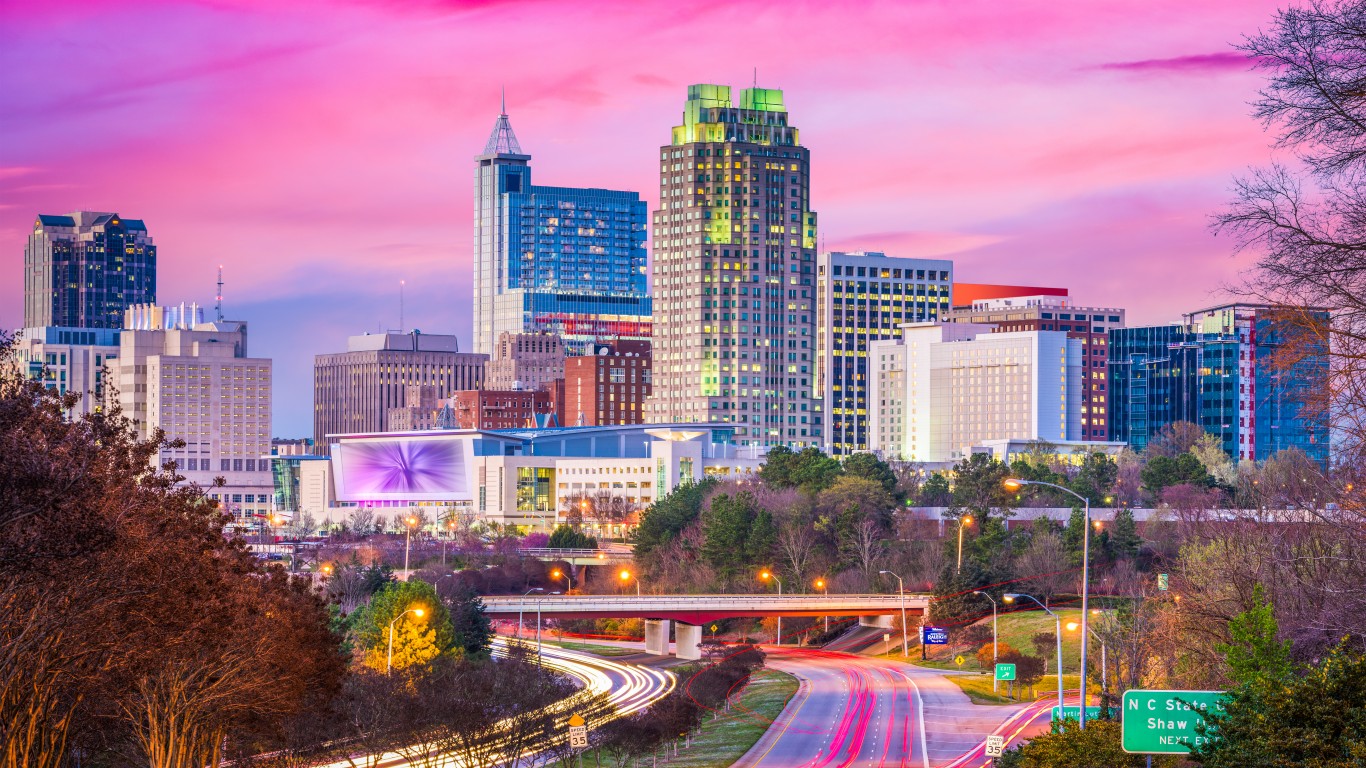
23. Raleigh, North Carolina
> Population growth 2000-2018: 62.8%
> Population in 2000 (Census): 276,093
> Population in 2010 (Census): 403,892
> Population in 2018 (5-yr ACS): 449,477
Compared with other fast-growing cities, North Carolina’s capital city Raleigh has had an exceptionally large population — even before its 62.8% growth since 2000. Raleigh is one of just 11 cities in the entire country that has added more than 150,000 new residents since 2000.
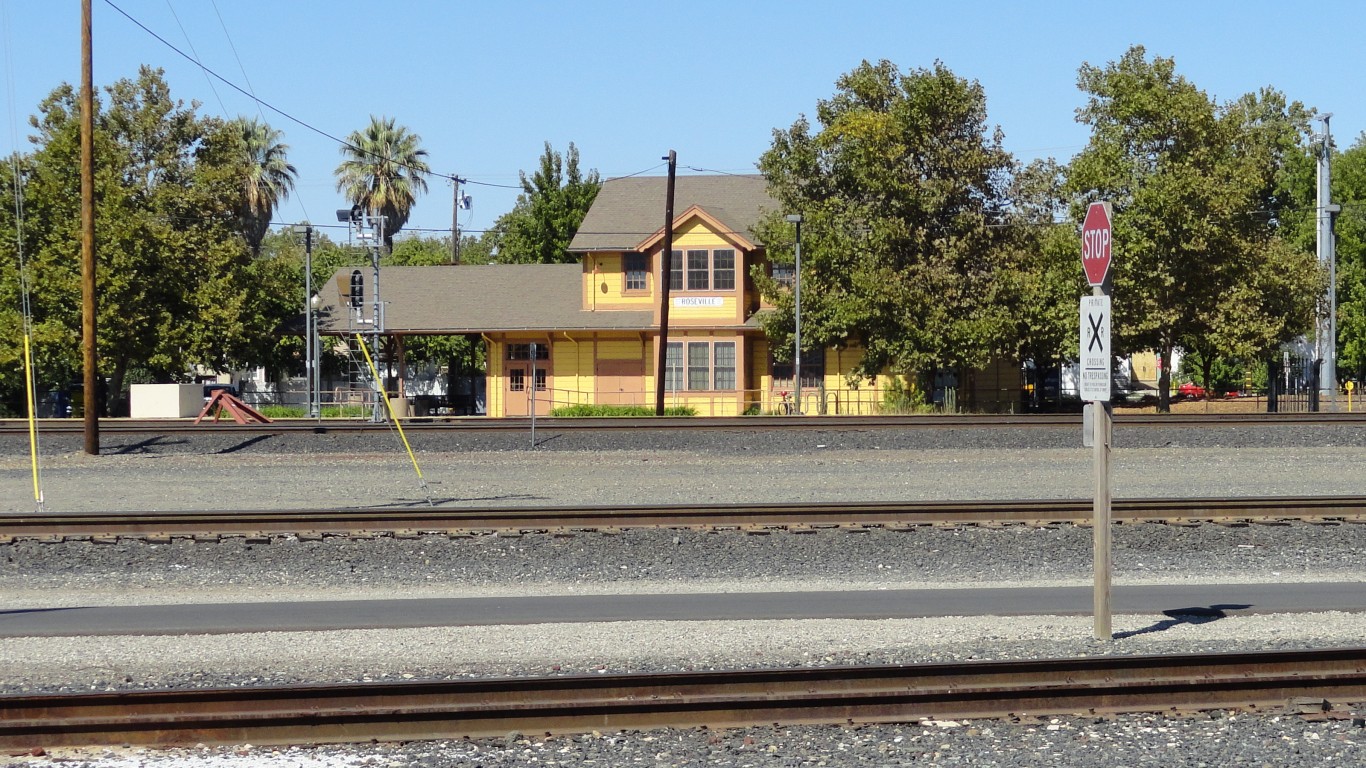
22. Roseville, California
> Population growth 2000-2018: 63.5%
> Population in 2000 (Census): 79,921
> Population in 2010 (Census): 118,788
> Population in 2018 (5-yr ACS): 130,705
Roseville is one of six California cities to rank among the fastest growing in the 21st century. The city, just outside of Sacramento, had fewer than 80,000 people in 2000. Now, it is home to more than 130,000. The city may be able to attract so many new residents because of its advantageous location. Placer County, where Roseville is located, has the best quality of life among all California counties, according to County Health Rankings.
[in-text-ad-2]
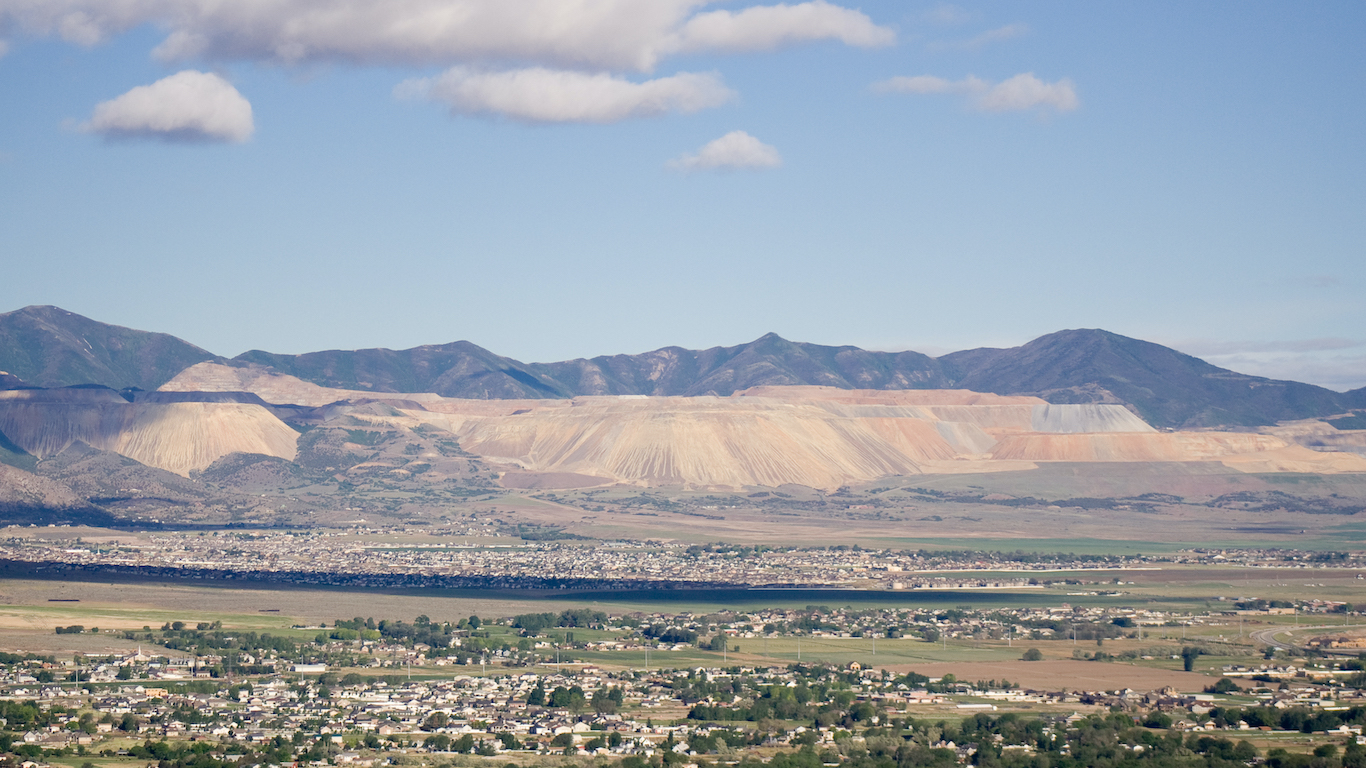
21. West Jordan, Utah
> Population growth 2000-2018: 63.8%
> Population in 2000 (Census): 68,336
> Population in 2010 (Census): 103,712
> Population in 2018 (5-yr ACS): 111,937
The population of West Jordan, Utah, climbed from less than 70,000 in 2000 to more than 100,000 just a decade later, a near 64% increase. According to the most recent figures from the ACS, there are nearly 112,000 people now living in West Jordan, which is just south of Salt Lake City.
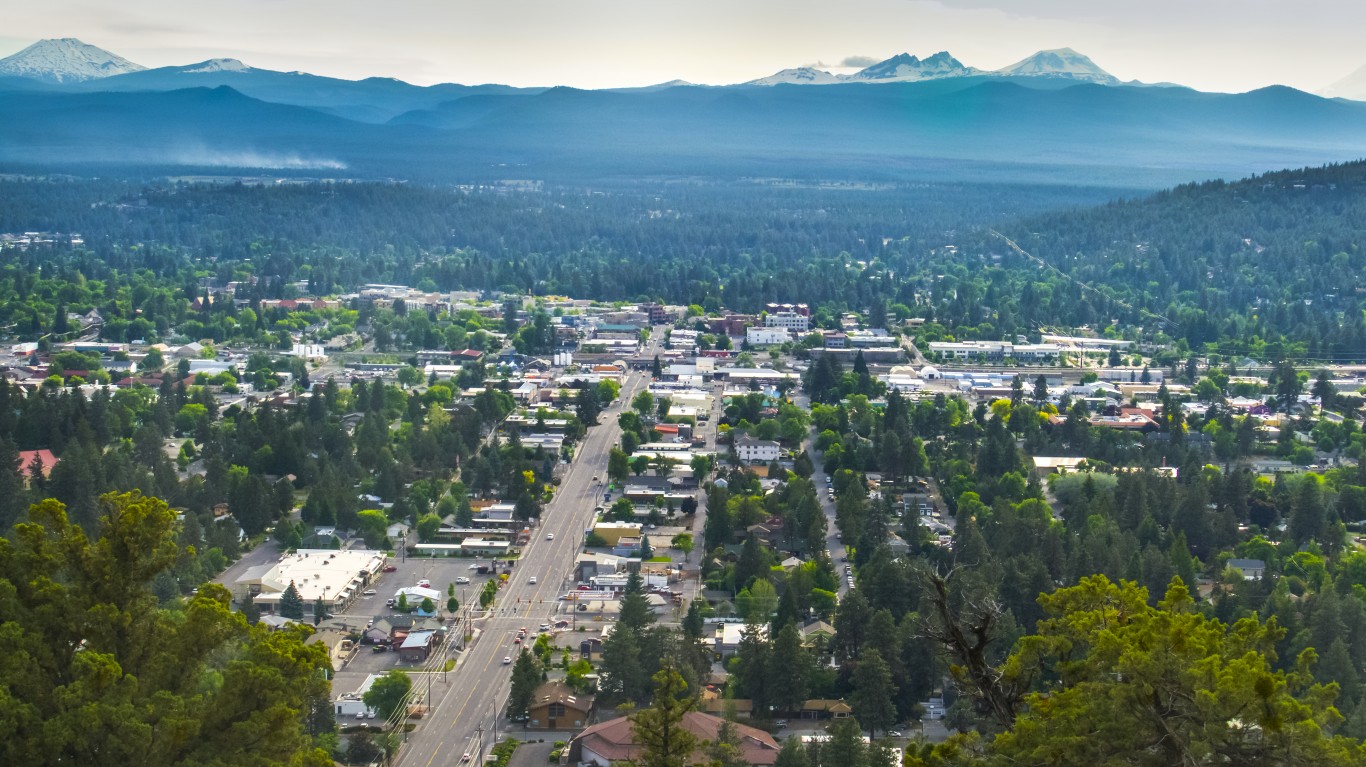
20. Bend, Oregon
> Population growth 2000-2018: 67.5%
> Population in 2000 (Census): 52,029
> Population in 2010 (Census): 76,639
> Population in 2018 (5-yr ACS): 87,167
Bend is the only place in Oregon to rank among the fastest growing cities that had a population of at least 50,000 as of 2000. Bend added 24,000 more residents from 2000 to 2010. Growth has slowed in the years since, as the expanding population led to higher rents, which forced some lower-income residents to move elsewhere, according to a local economic development group.
[in-text-ad]
19. Cary, North Carolina
> Population growth 2000-2018: 68.9%
> Population in 2000 (Census): 94,536
> Population in 2010 (Census): 135,234
> Population in 2018 (5-yr ACS): 159,715
Cary, North Carolina, is part of the Research Triangle, an area surrounded by three major research universities. With so many skilled college graduates in the area, many agriculture, technology, and advanced manufacturing companies both started and moved to the Triangle. This may be one of the reasons for Cary’s nearly 69% population growth from 2000 to 2018 — adding a total of more than 65,000 residents.
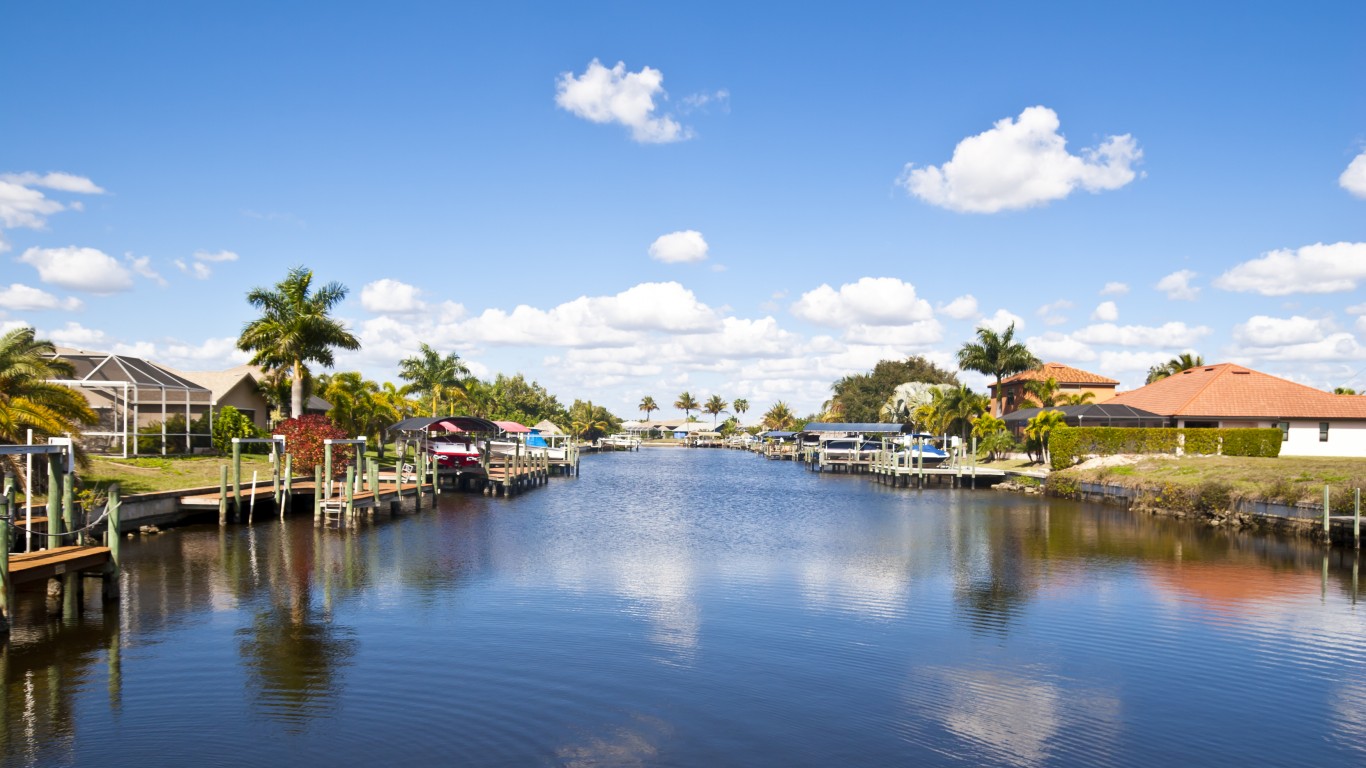
18. Cape Coral, Florida
> Population growth 2000-2018: 69.8%
> Population in 2000 (Census): 102,286
> Population in 2010 (Census): 154,305
> Population in 2018 (5-yr ACS): 173,679
One of three Florida cities to rank among the fastest growing, Cape Coral has grown by more than 71,000 people since 2000, a nearly 70% increase in the city’s population. The southwestern Florida city is bordered by the ocean and wildlife preserves.
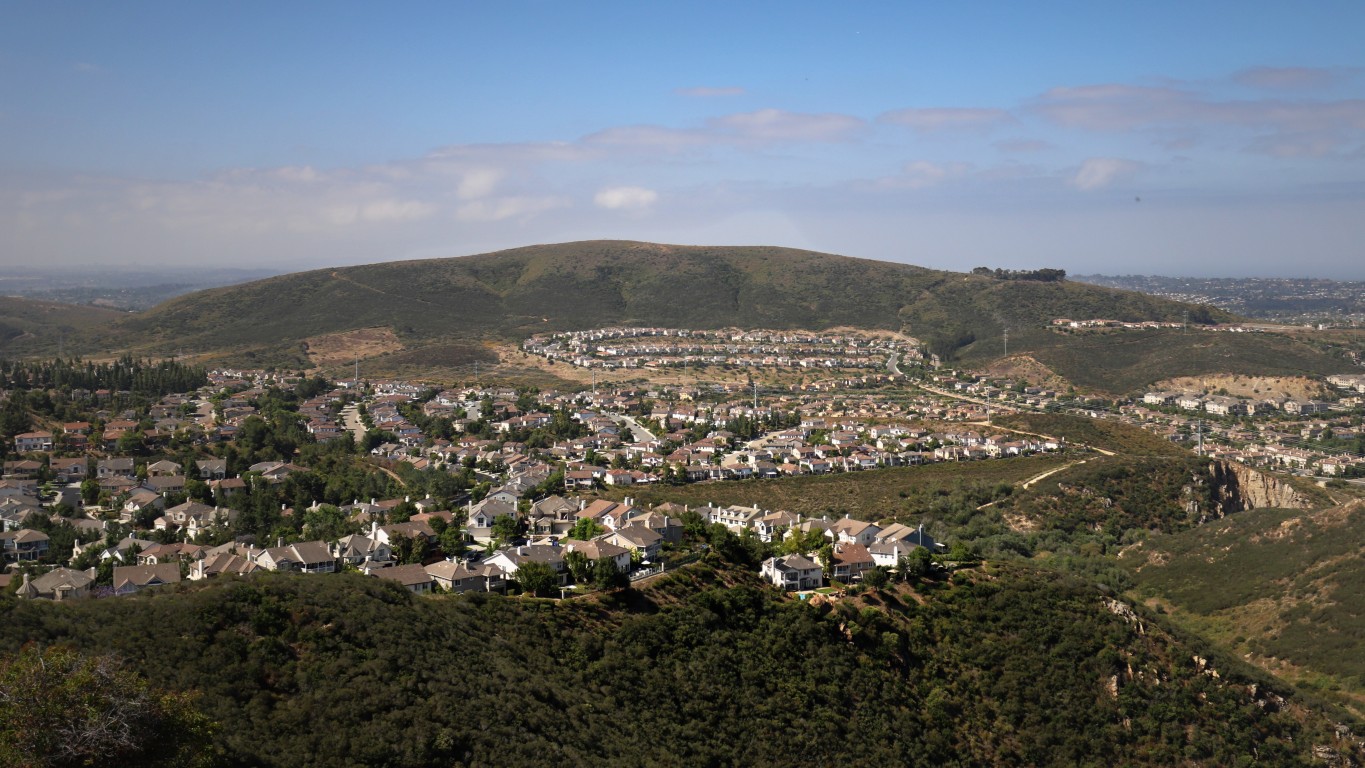
17. San Marcos, California
> Population growth 2000-2018: 70.1%
> Population in 2000 (Census): 54,977
> Population in 2010 (Census): 83,781
> Population in 2018 (5-yr ACS): 93,493
San Marcos, California, is one of just a handful of cities that had a population of over 50,000 in 2000 and that experienced population growth of more than 70% since. Located between San Diego and another city on this list, Temecula, San Marcos is within driving distance from the ocean, mountains, lakes, and forest reserves.
[in-text-ad-2]
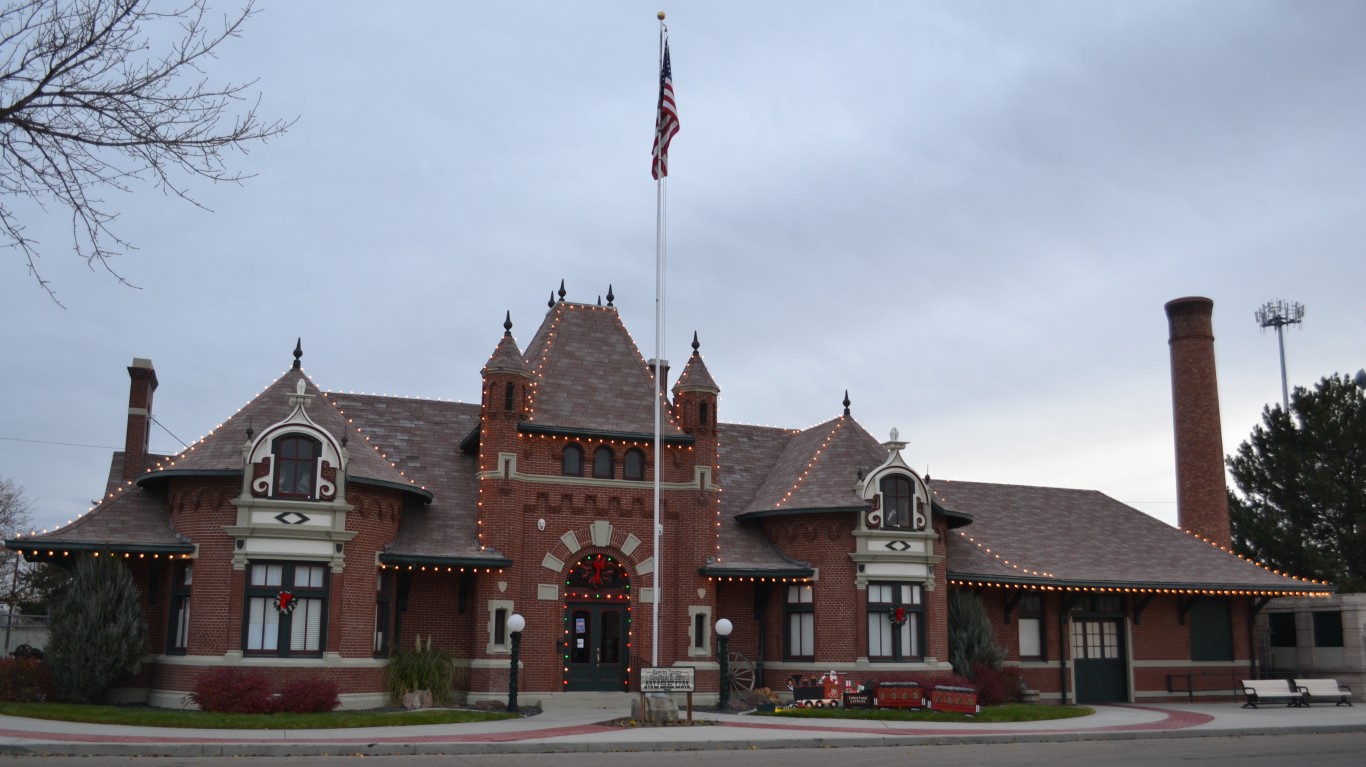
16. Nampa, Idaho
> Population growth 2000-2018: 72.7%
> Population in 2000 (Census): 51,867
> Population in 2010 (Census): 81,557
> Population in 2018 (5-yr ACS): 89,576
The only Idaho city to rank among the fastest growing in the country, Nampa’s population grew by more than 37,000 people from 2000 to 2018, an increase of more than 72.7%. After the city added more than 3,000 people from 2000 to 2010, Nampa’s growth tapered off, about 8,000 new residents since.
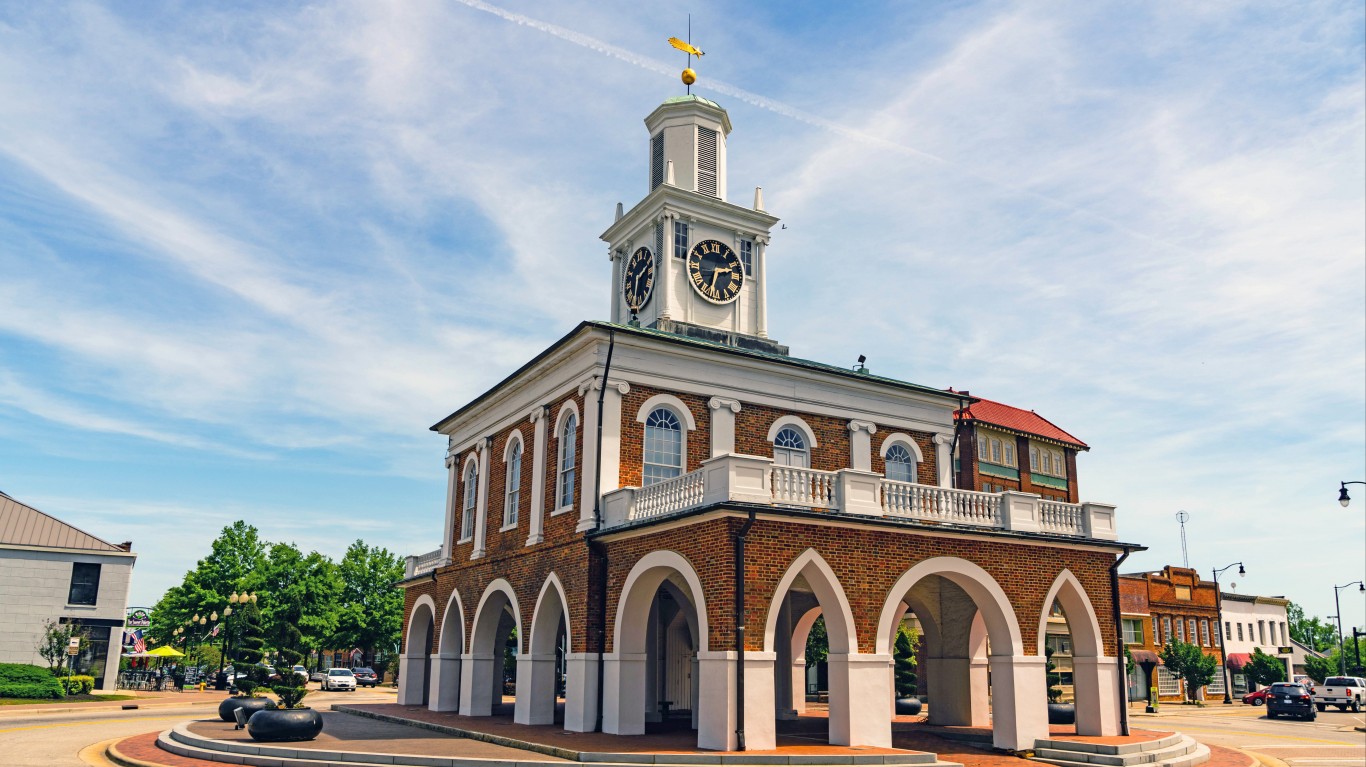
15. Fayetteville, North Carolina
> Population growth 2000-2018: 73.8%
> Population in 2000 (Census): 121,015
> Population in 2010 (Census): 200,564
> Population in 2018 (5-yr ACS): 210,324
Fayetteville’s massive population growth has slowed down in recent years. The North Carolina city added nearly 80,000 new residents from 2000 to 2010. In the eight years since, however, Fayetteville’s population grew by fewer than 10,000 people. Still, the population’s expansion from the first decade of the 21st century is enough to make the city one of the fastest growing in the country.
[in-text-ad]
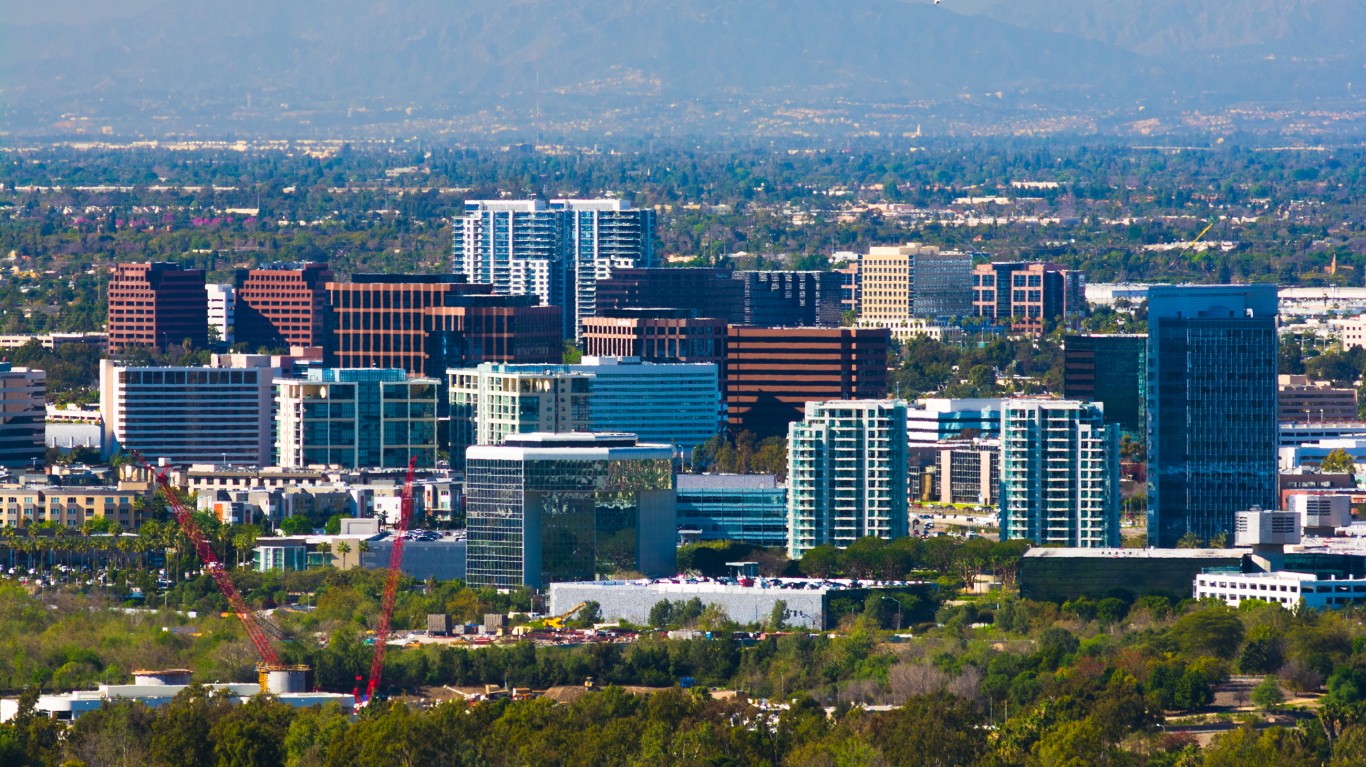
14. Irvine, California
> Population growth 2000-2018: 79.5%
> Population in 2000 (Census): 143,072
> Population in 2010 (Census): 212,375
> Population in 2018 (5-yr ACS): 256,877
Irvine was already a large city in 2000, with over 143,000 residents. Young adults, those aged 21 to 34 years old, comprise a growing share of the Southern California city population at nearly 25%. The population boom in Irvine, as well as much of the surrounding Southern California area has been spurred by international immigration, according to the Southern California Association of Governments.
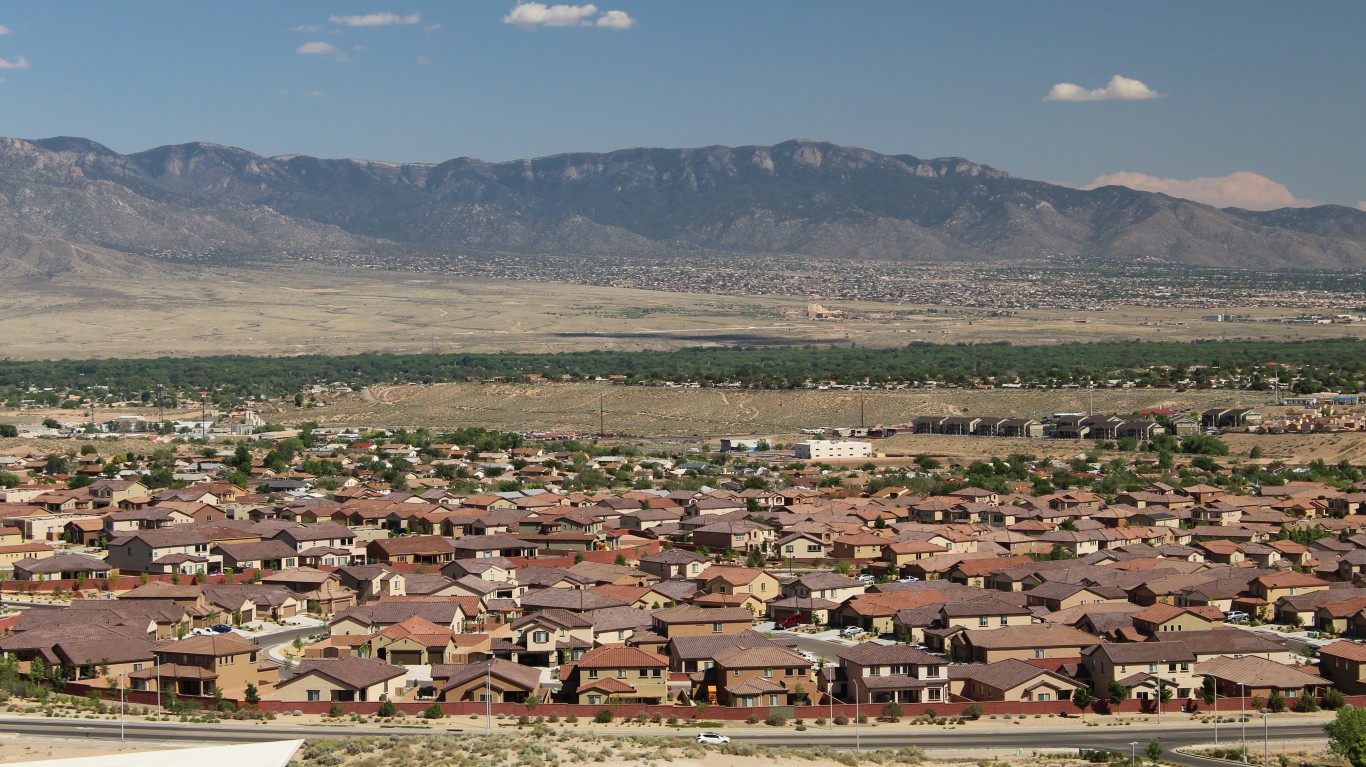
13. Rio Rancho, New Mexico
> Population growth 2000-2018: 80.3%
> Population in 2000 (Census): 51,765
> Population in 2010 (Census): 87,521
> Population in 2018 (5-yr ACS): 93,317
Incorporated in 1981, Rio Rancho is one of the newest cities in New Mexico. From 2000 to 2010, the city added more than 35,000 residents. Though growth has slowed in the years since, Rio Rancho is still expanding, up to a population of 93,317 as of 2018.
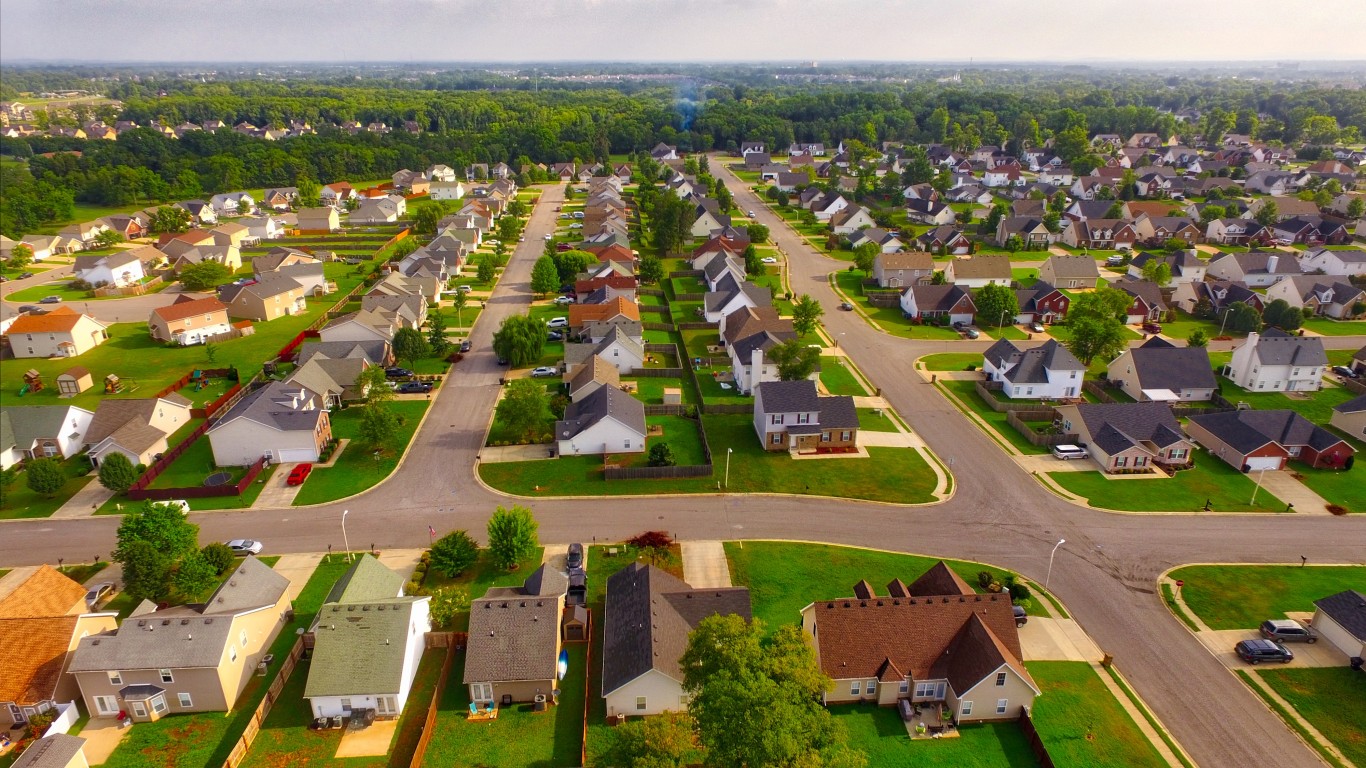
12. Murfreesboro, Tennessee
> Population growth 2000-2018: 83.4%
> Population in 2000 (Census): 68,816
> Population in 2010 (Census): 108,755
> Population in 2018 (5-yr ACS): 126,188
Murfreesboro, Tennessee, ranks among the fastest growing cities in America, and it seems that this trend will continue. The Rutherford County Chamber of Commerce projects that Murfreesboro will continue expanding its population at a rapid pace, growing to over 153,000 residents by 2024. The city was relatively small, at fewer than 69,000 residents in 2000, but it grew by more than 40,000 people in just a decade.
[in-text-ad-2]
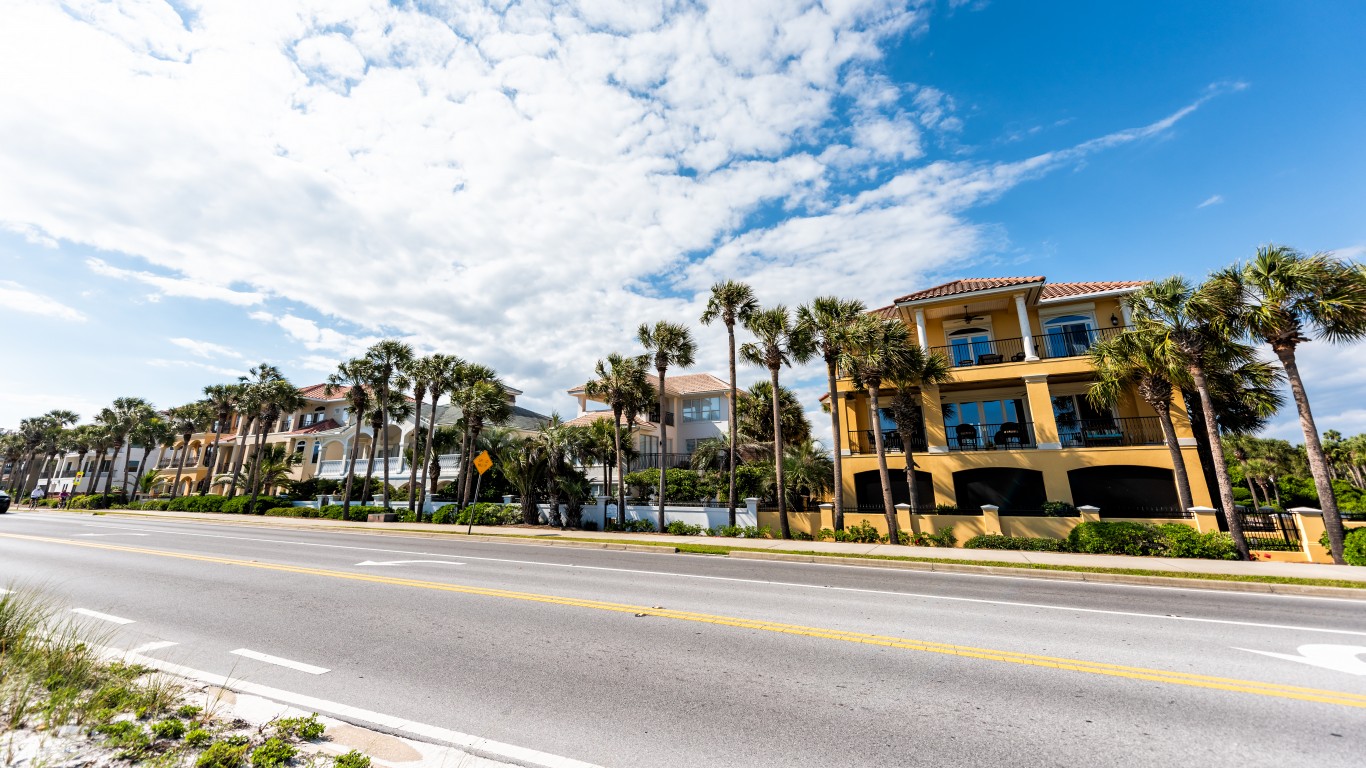
11. Miramar, Florida
> Population growth 2000-2018: 87.5%
> Population in 2000 (Census): 72,739
> Population in 2010 (Census): 122,041
> Population in 2018 (5-yr ACS): 136,415
Miami suburb Miramar added more than 63,000 new residents from 2000 to 2018, the most recent year for which data is available. The city has 40 different parks, with facilities to play soccer, tennis, baseball, and more. It is also within driving distance from a number of different beaches.
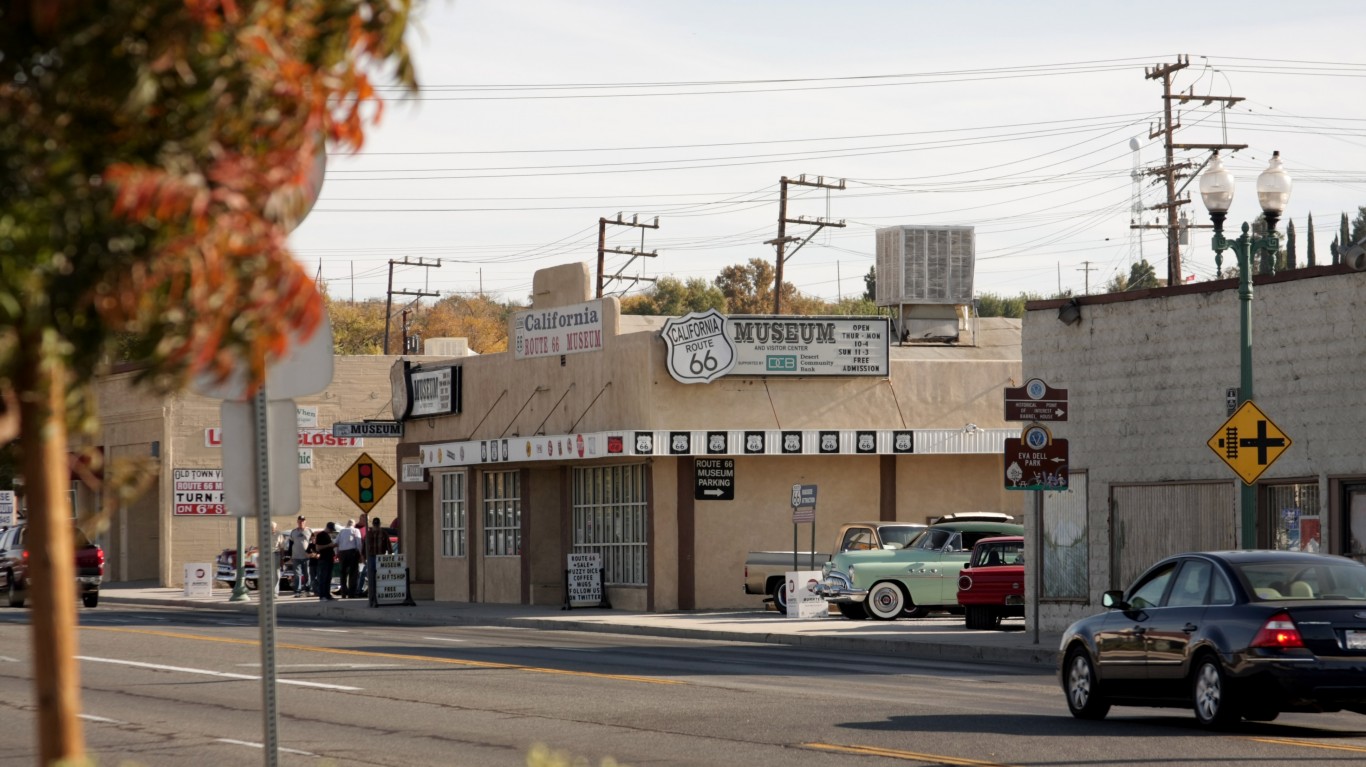
10. Victorville, California
> Population growth 2000-2018: 90.1%
> Population in 2000 (Census): 64,029
> Population in 2010 (Census): 115,903
> Population in 2018 (5-yr ACS): 121,721
In 2000, Victorville, California, had just over 64,000 residents, making it the 429th largest city in the country. After gaining more than 57,000 new residents in the 18 years since then, Victorville now ranks as the 221st largest U.S. city. The city is located about 80 miles east of Los Angeles. The separation from the major metropolitan makes housing more affordable, drawing people from that L.A. area to places like Victorville and the surrounding High Desert region.
[in-text-ad]
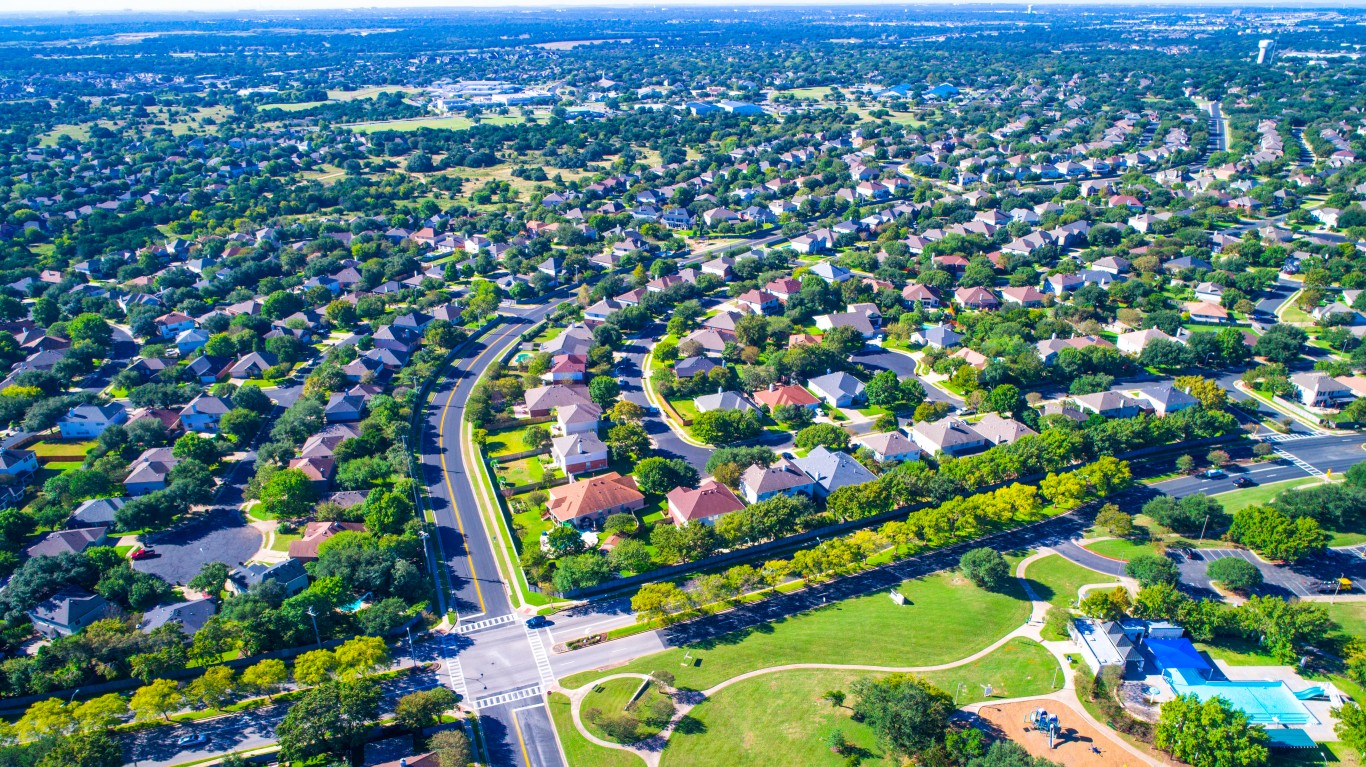
9. Round Rock, Texas
> Population growth 2000-2018: 90.3%
> Population in 2000 (Census): 61,136
> Population in 2010 (Census): 99,887
> Population in 2018 (5-yr ACS): 116,369
Located just north of Austin in the Texas Hill Country, Round Rock is one of just 10 cities that have grown by more than 90% since 2000. The Austin-Round Rock metro area has many positive economic indicators, like a low unemployment rate and relatively high median household income. It is home to campuses of several major tech corporations like Apple and IBM, which may help explain some of the population growth.
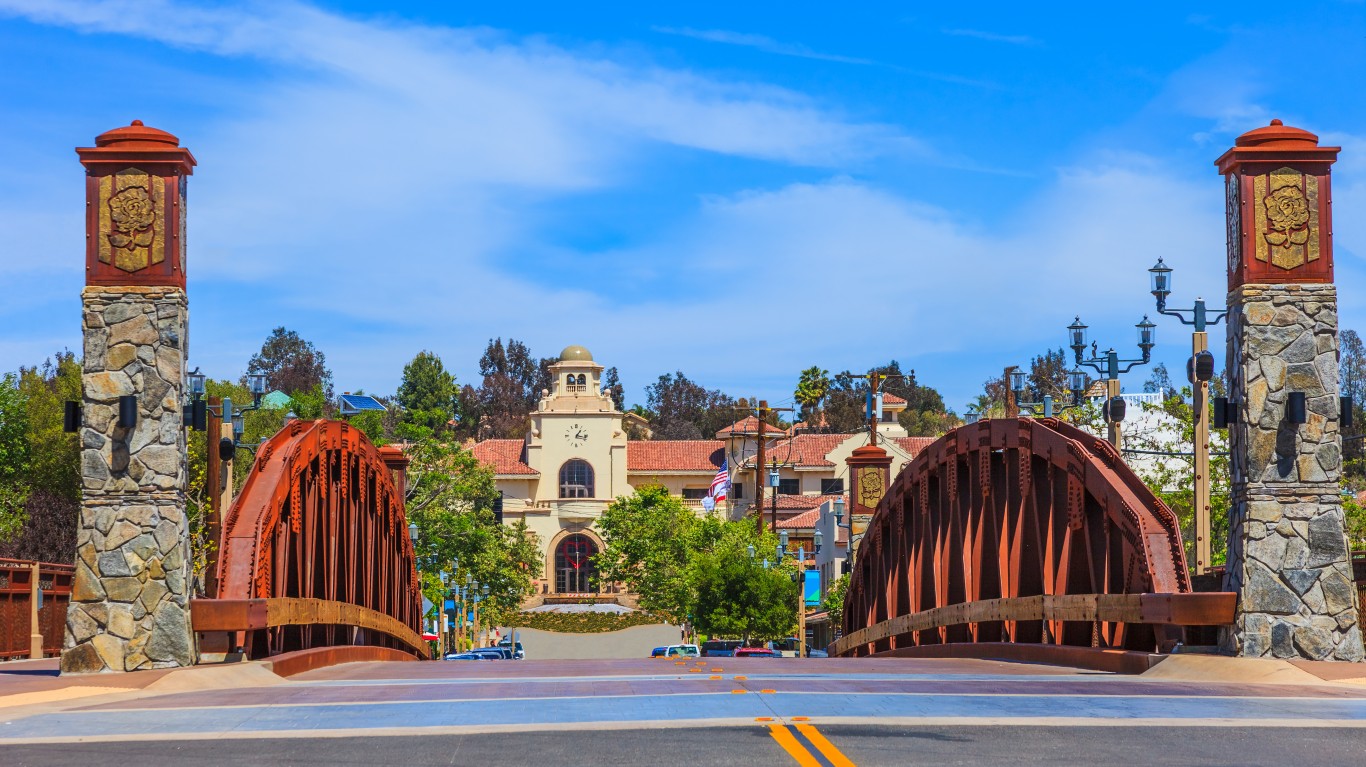
8. Temecula, California
> Population growth 2000-2018: 91.8%
> Population in 2000 (Census): 57,716
> Population in 2010 (Census): 100,097
> Population in 2018 (5-yr ACS): 110,722
One of six California cities to rank among the fastest growing, Temecula’s population nearly doubled from 2000 to 2018, adding about 53,000 new residents. Like many other cities on this list, Temecula grew tremendously from 2000 to 2010 before tapering off in the years after. It added over 42,000 residents from 2000 to 2010, then added fewer than 11,000 since. The city is located along I-15, in between San Diego and Los Angeles.
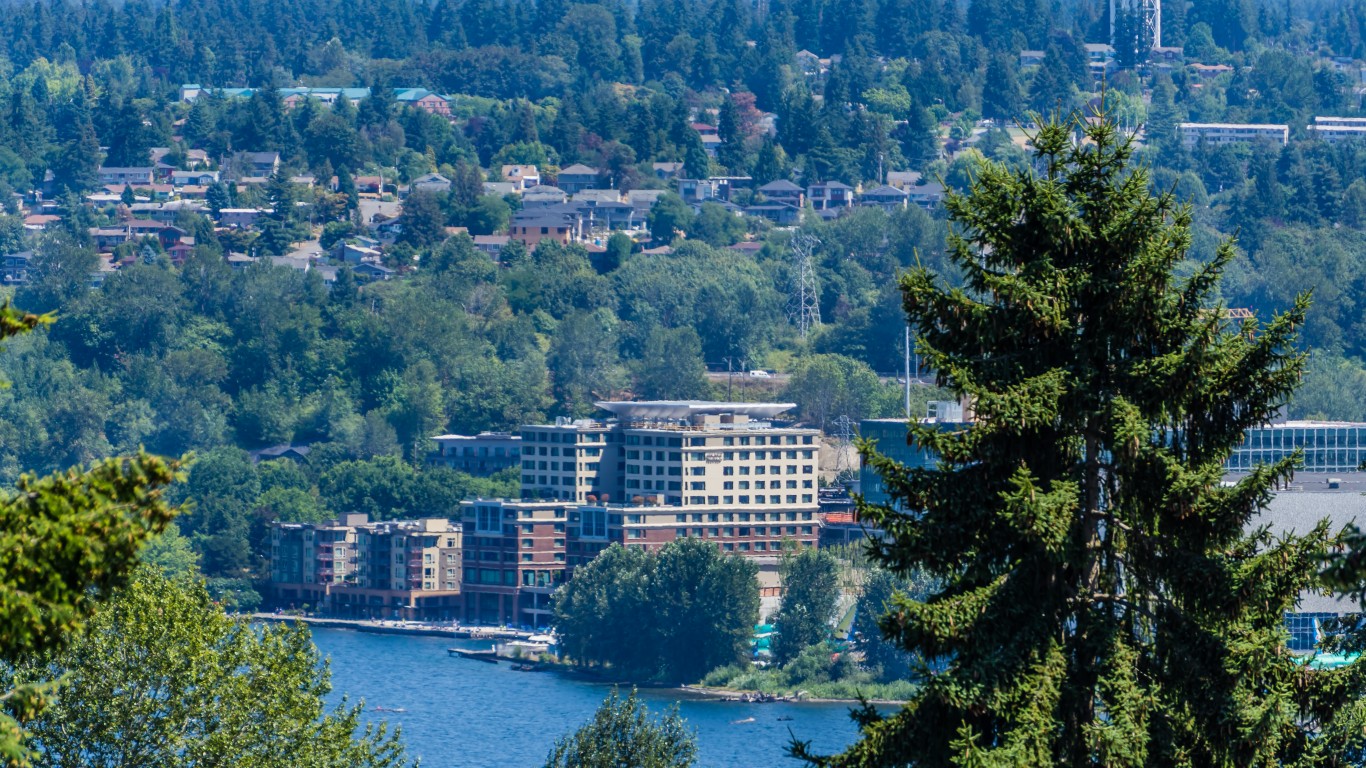
7. Renton, Washington
> Population growth 2000-2018: 99.2%
> Population in 2000 (Census): 50,052
> Population in 2010 (Census): 90,927
> Population in 2018 (5-yr ACS): 99,692
With a population of 50,052 in 2000, Renton, Washington, is one of the smallest cities on this list, barely making the cutoff for consideration. Over the last two decades, the city’s population grew to nearly 100,000 people, or by 90.3%, nearly doubling in size. Renton’s population growth has slowed considerably in recent years. The city added more than 40,000 residents from 2000 to 2010, but fewer than 9,000 from 2010 to 2018.
[in-text-ad-2]
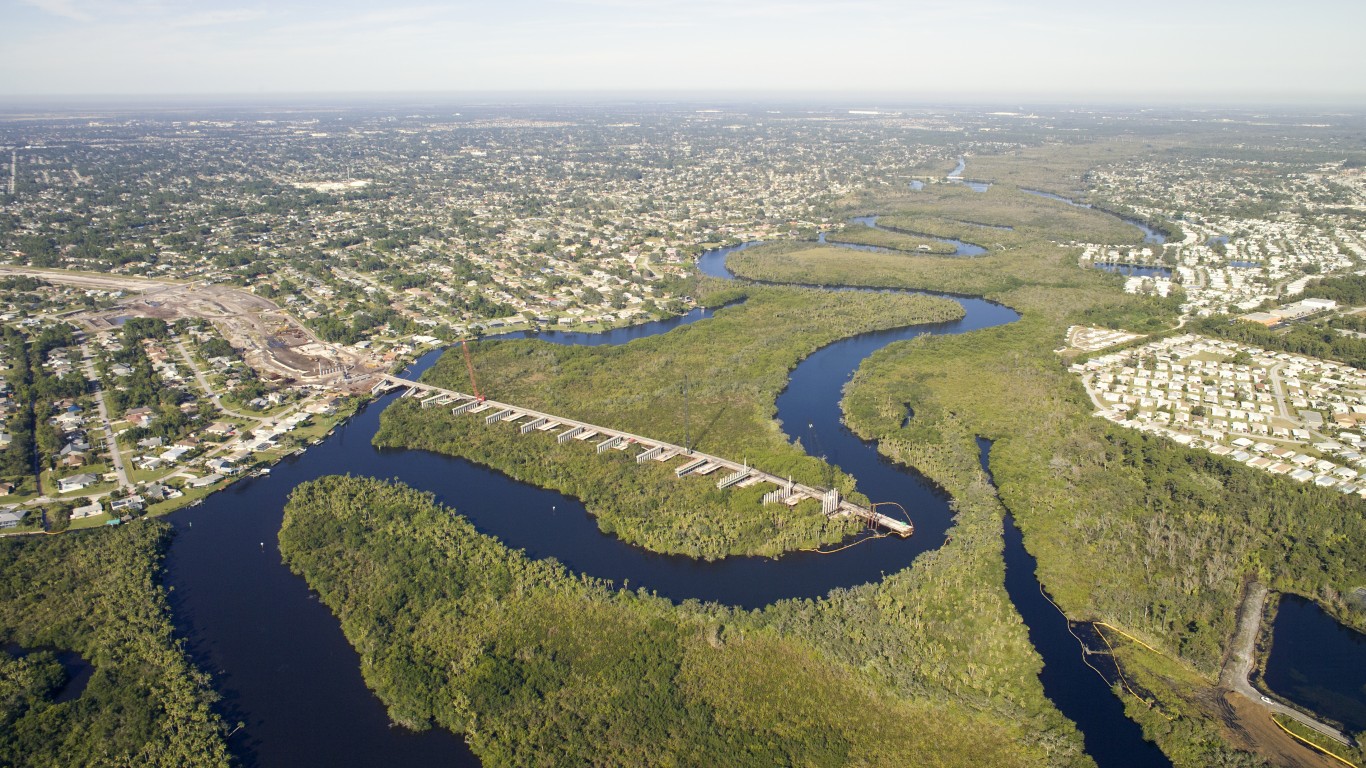
6. Port St. Lucie, Florida
> Population growth 2000-2018: 101.4%
> Population in 2000 (Census): 88,769
> Population in 2010 (Census): 164,603
> Population in 2018 (5-yr ACS): 178,778
Port St. Lucie is one of only six cities that had 50,000 or more residents in 2000 and that more than doubled in population over the last two decades. The city’s population grew from 88,769 to 178,778, faster than all but five other cities considered. As is the case in many fast-growing cities, the cost of living in Port St. Lucie is relatively low, 3% less than the national average.
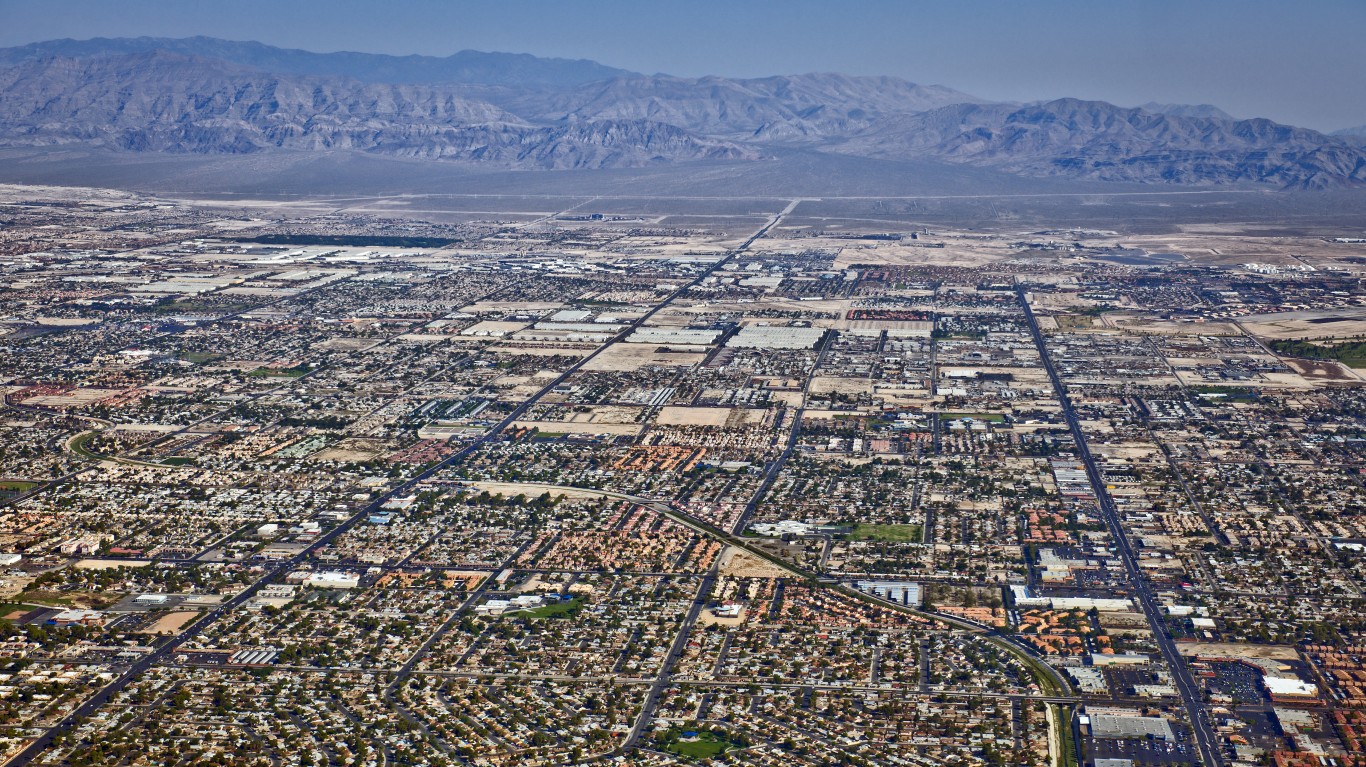
5. North Las Vegas, Nevada
> Population growth 2000-2018: 103.0%
> Population in 2000 (Census): 115,488
> Population in 2010 (Census): 216,961
> Population in 2018 (5-yr ACS): 234,389
North Las Vegas is one of two cities in the Las Vegas area, along with Henderson, to rank among the 25 fastest growing cities that had at least 50,000 residents in 2000. Many of the newest residents of Clark County moved there from California. The area has also attracted many new Hispanic residents.
[in-text-ad]
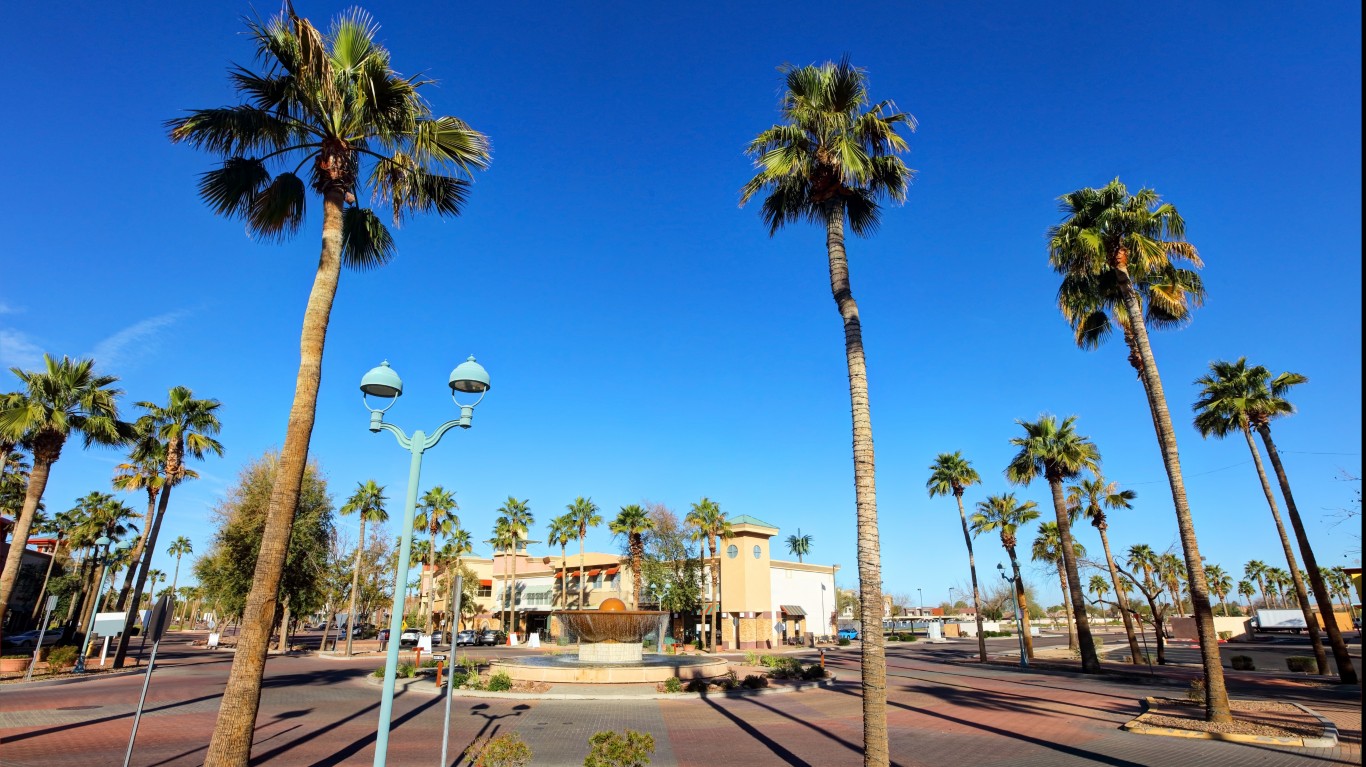
4. Gilbert, Arizona
> Population growth 2000-2018: 111.7%
> Population in 2000 (Census): 109,697
> Population in 2010 (Census): 208,453
> Population in 2018 (5-yr ACS): 232,176
Trailing just three other cities for population growth, the population of Gilbert, Arizona, grew by 111.7% between 2000 and 2018, more than doubling in size from 109,697 to 208,453. Low violent crime and job opportunity are among the numerous factors that can attract new residents to a city and help explain Gilbert’s remarkable population growth. The city’s 2018 violent crime rate of 94.6 incidents per 100,000 people and unemployment rate of 3.5% are each among the lowest for U.S. cities.
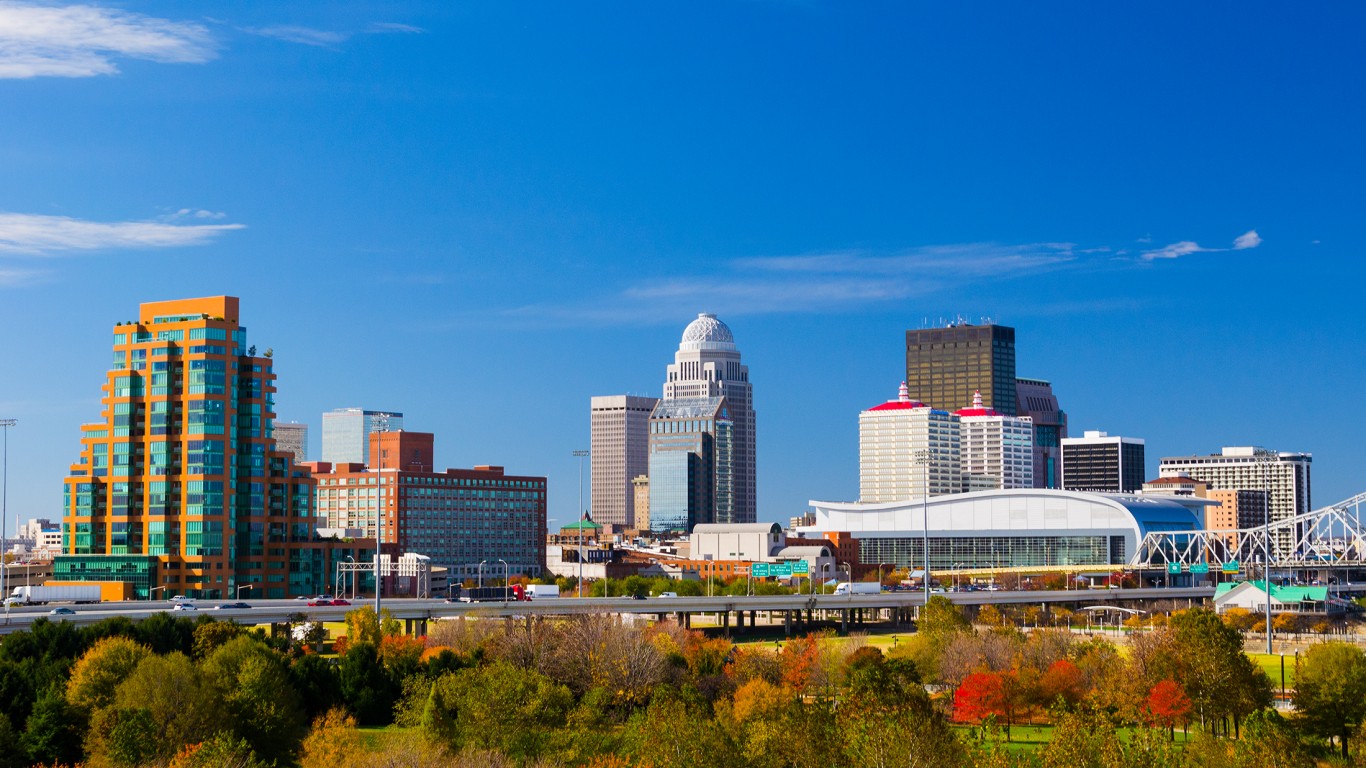
3. Louisville, Kentucky
> Population growth 2000-2018: 140.2%
> Population in 2000 (Census): 256,231
> Population in 2010 (Census): 597,337
> Population in 2018 (5-yr ACS): 615,478
Compared with other fast-growing cities, Louisville has had an exceptionally large population — even before its 140% growth since 2000. Nearly all of Louisville’s 21st century growth occurred from 2000 to 2010, when the city more than doubled its population, adding over 340,000 new residents. After that period, growth slowed dramatically, and the city added just over 18,000 new residents since 2010.
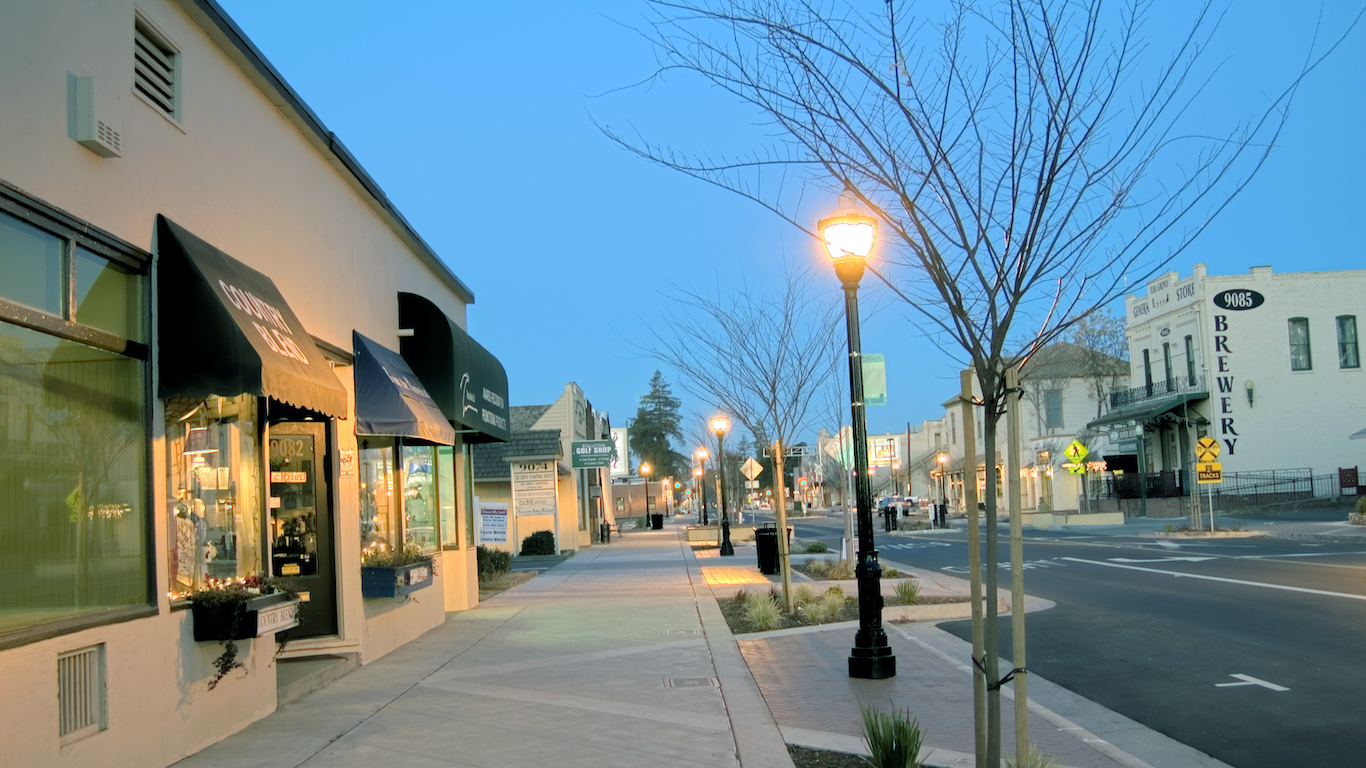
2. Elk Grove, California
> Population growth 2000-2018: 177.0%
> Population in 2000 (Census): 60,000
> Population in 2010 (Census): 153,015
> Population in 2018 (5-yr ACS): 166,228
The near nation-leading population growth in Elk Grove, California reflects a general trend in the Greater Sacramento area of people and families choosing to settle in suburban areas.
[in-text-ad-2]
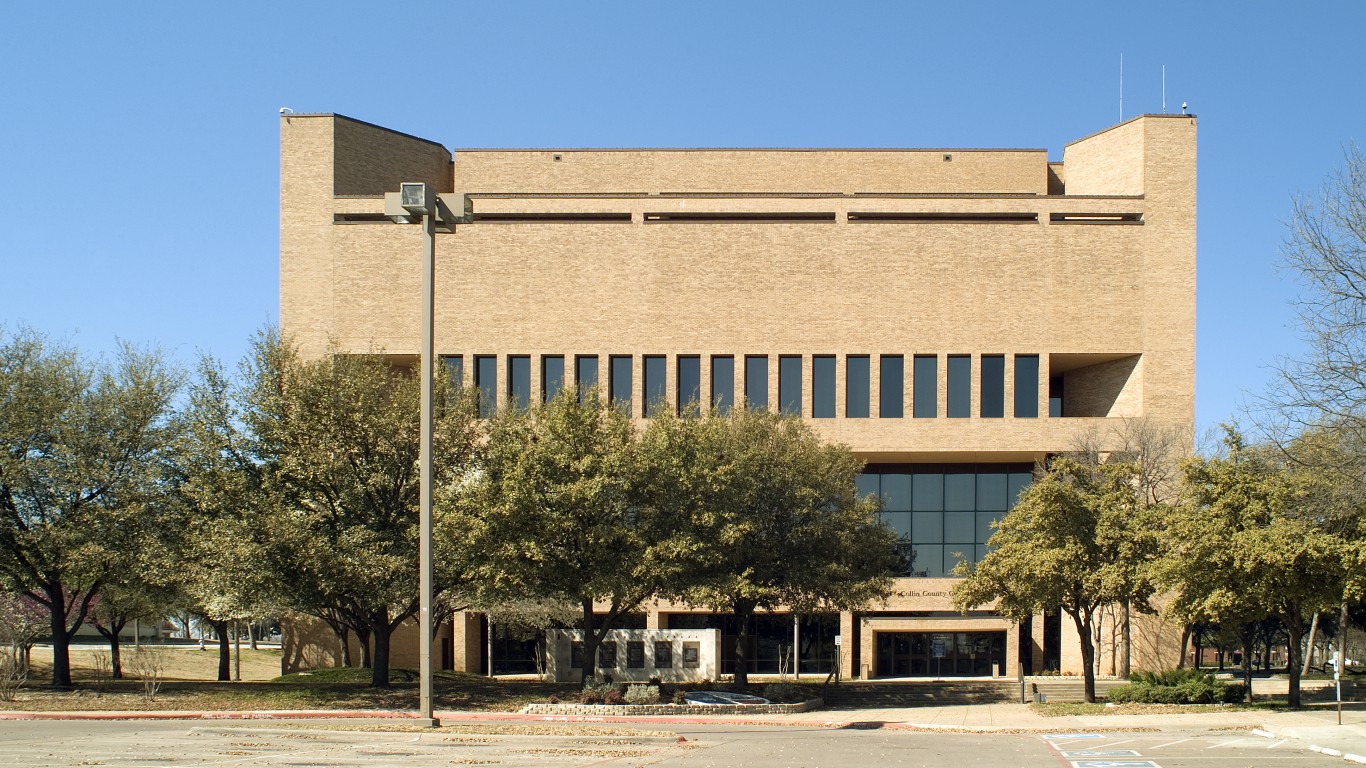
1. Mckinney, Texas
> Population growth 2000-2018: 203.0%
> Population in 2000 (Census): 54,369
> Population in 2010 (Census): 131,117
> Population in 2018 (5-yr ACS): 164,760
Mckinney — one of three cities in Texas on this list — more than tripled in size between 2000 and 2018. This Dallas-area suburb had by far the largest growth by percentage of any large city. Like many other cities on this list, Mckinney experienced a large population boom — adding over 75,000 residents — from 2000 to 2010, but growth has since leveled off. While the population increase of over 33,000 people from 2010 to 2018 is significant, it is nowhere near the level of the previous decade.
Are you ahead, or behind on retirement? For families with more than $500,000 saved for retirement, finding a financial advisor who puts your interest first can be the difference, and today it’s easier than ever. SmartAsset’s free tool matches you with up to three fiduciary financial advisors who serve your area in minutes. Each advisor has been carefully vetted and must act in your best interests. Start your search now.
If you’ve saved and built a substantial nest egg for you and your family, don’t delay; get started right here and help your retirement dreams become a retirement reality.
Thank you for reading! Have some feedback for us?
Contact the 24/7 Wall St. editorial team.